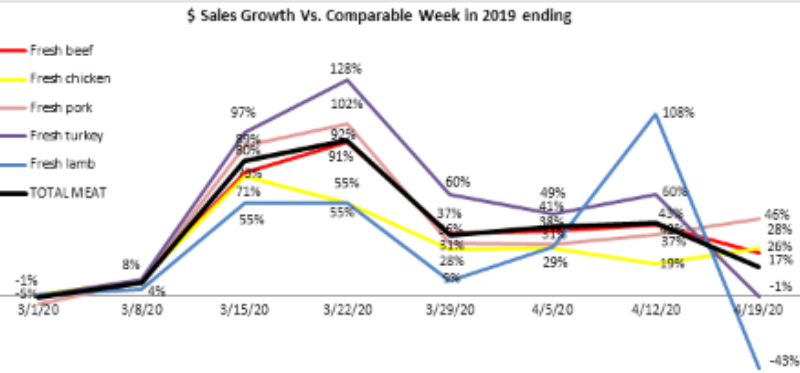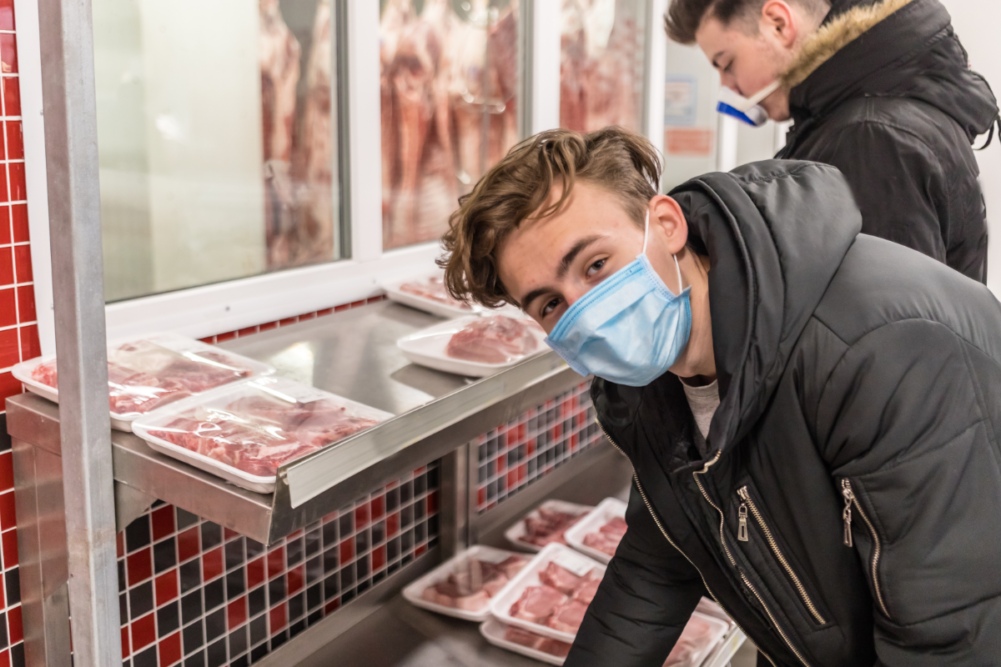SAN ANTONIO – With the Easter dinner shopping season at a close, sales across the fresh perimeter were expected to take a tumble in comparison to the last couple of weeks. While sales for the week ending on April 19 were lower than previous weeks, sales were still significantly elevated above the same timeframe in 2019—notable because those numbers are compared to last year’s Easter week shopping.
For the week ending on April 19, sales in the meat department were up 17%, according to a report compiled by 210 Analytics and IRI—that’s down from 43% the week before.
Most meat and poultry categories continued to sell above typical levels compared to 2019, except for turkey and lamb. In specific categories, beef was up 25.6%, chicken was up 28.2% and pork was up 46%. Turkey was down 0.6% and lamb tumbled by 43.1%.
“The temporary closure of many meat and poultry plants in the past few weeks is only now showing up on the retail shelf, with many items becoming more difficult to find,” said Christine McCracken, executive director of food and agribusiness for Rabobank. “US beef and pork facilities are running at only 75% of normal levels, while chicken operations are operating at 10% below the norm. This situation is expected to get a bit worse in the next two to three weeks, as additional plants are affected. Supplies of many processed and deli meats are also challenged as they compete for scarce raw materials and face similar labor issues.”
Looking forward, Anne-Marie Roerink, president of 210 Analytics, said that while it’s hard to predict exactly what the coming weeks will look like, it’s likely that grocery retailing will remain above average for the foreseeable future.
Roerink pointed out that USDA Supplemental Nutrition Assistance Program (SNAP) recipients will receive a temporary 40% increase in monthly benefits to provide relief from coronavirus-related economic hardship.
“Next week’s sales results will reflect a regular week in both calendar years and may provide some indication of how far the new baseline will lie above the old normal,” Roerink said. “In addition to many consumption occasions having shifted to at-home, more than 26 million Americans have filed for unemployment in the last four weeks and economic pressure typically translates into more meal preparation at home.”

Source: IRI, Total US

